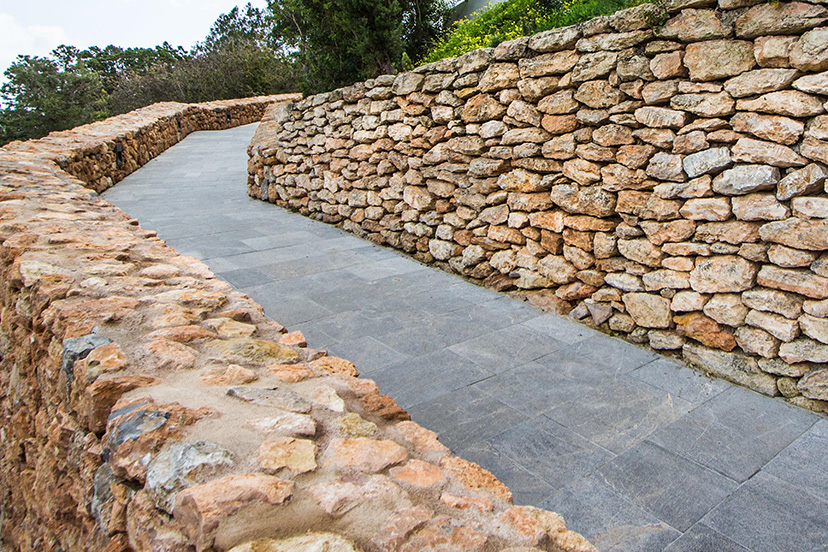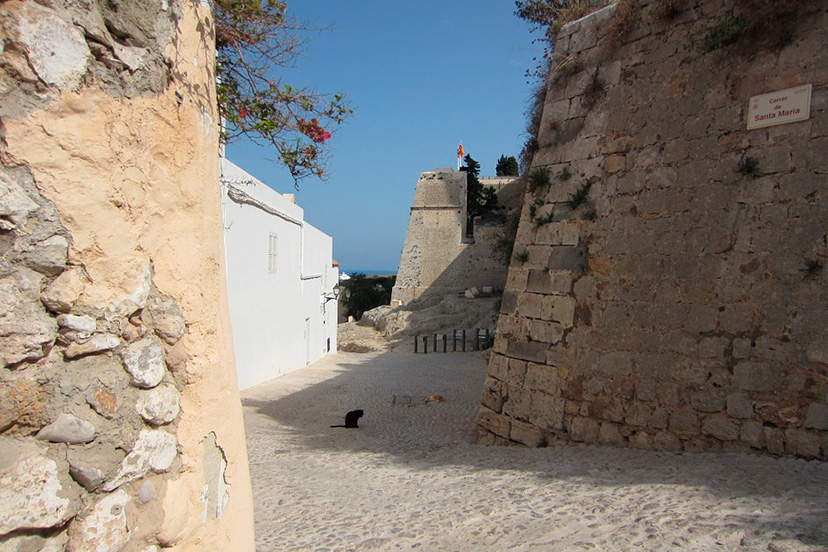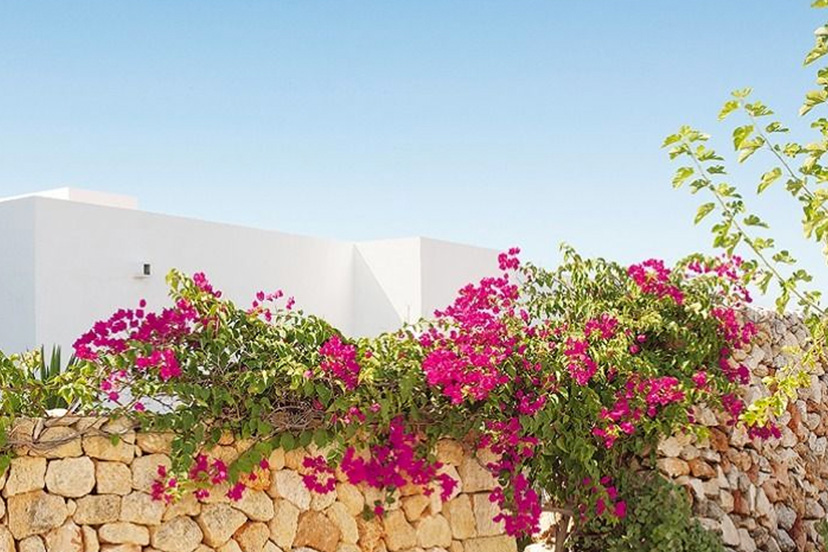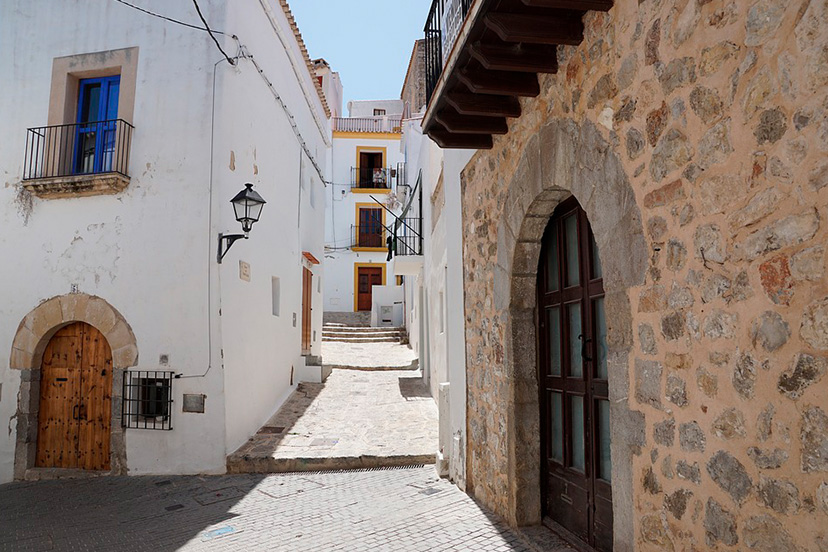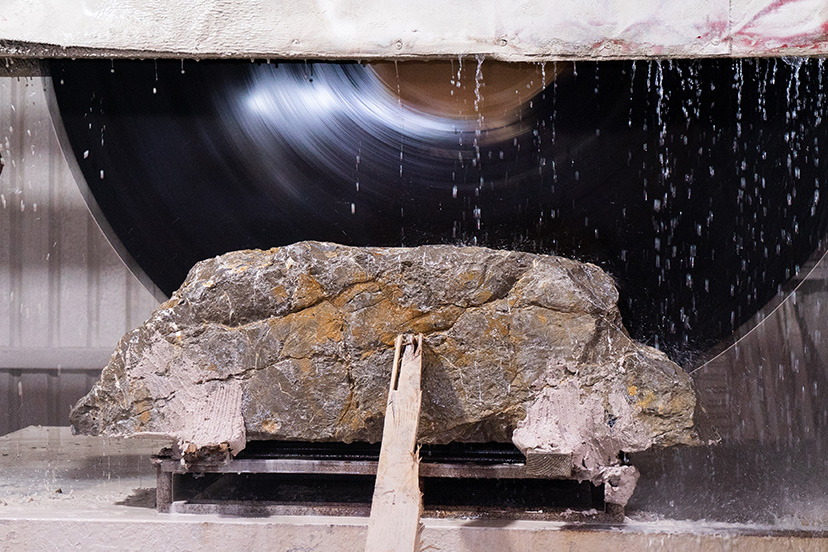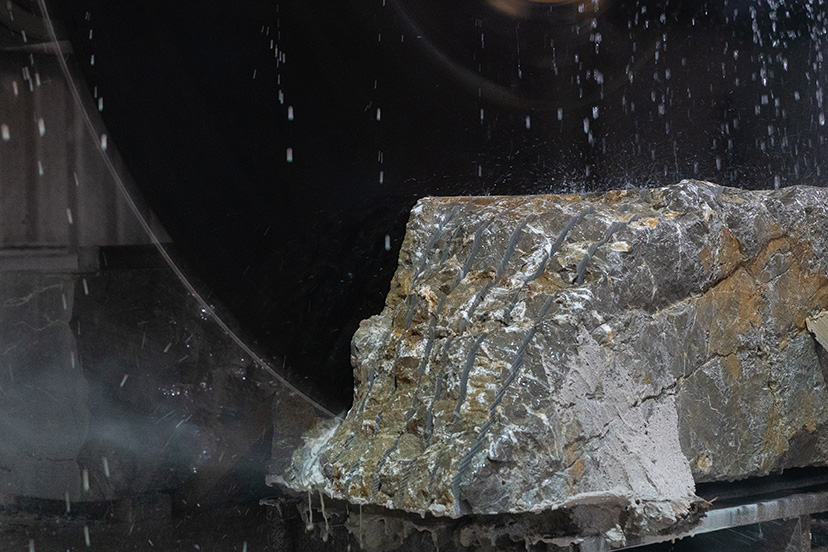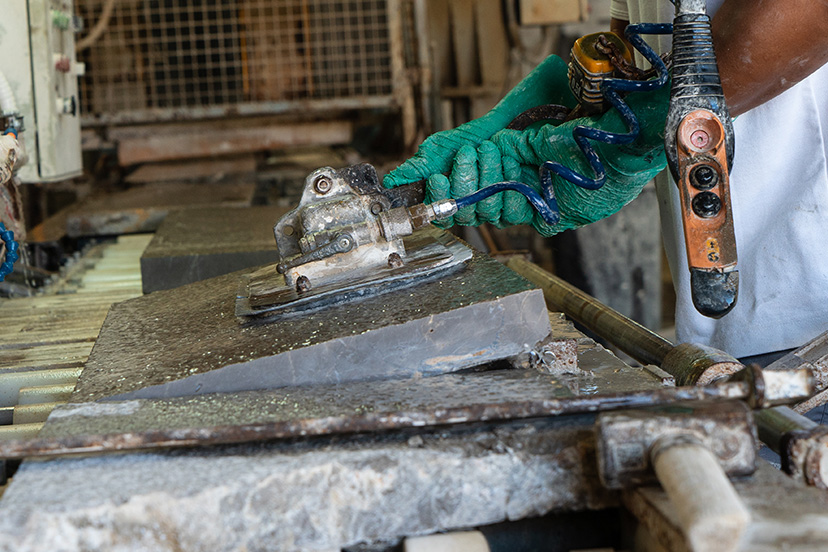It is many years since the beautiful blue of its waters has ceased to be the sole representative of Ibiza at its most natural. The high temple of hedonism, scuba diving, sailing and gastronomy, the island’s architecture, which tells a little-known story, joins the list. Unquestionably, the natural stone of the island is the quintessential ingredient that centuries on continues to adorn walls, façades, parks, gardens, chimneys, flowerpots, and even decorative items for house interiors.
All you need to do is raise your eyes as you scan the horizon from any of the paths that traverse the Ibizan countryside, to realise that the very presence of this material is sufficient to embellish Ibiza’s rural landscape.
As with the civic buildings and homes and edifices scattered around the island, Ibiza’s natural stone speaks of the importance of skills and workmanship and the weight of tradition.
One of the most typical of these is the “marés”, a very popular stone that was extensively used in buildings in days gone by. It is made from hardened sand and a conglomerate of carbonated fragments of marine organisms and grains of other rocks. It is porous and sandy and rough to the touch, and it is an extremely versatile material which means it can be used in building all kinds of constructions.
Its great beauty lies mainly in its delicate colour which ranges from beige to a soft pink, along with the characteristic ochre colouring of Mediterranean constructions. These muted tones and its insulating ability mean that houses with façades built in this stone do not absorb too much heat from the sun.
But this merely functional purpose is not the only explanation for the prevalence of this sustainable material over other more modern ones. Like a recipe handed down by grandparents to their grandchildren, the island’s builders choose their stones practically one by one to make the walls of so many country houses, agrotourism homes, and restaurants, all built in recent years but in the traditional style.
Finally, once again, going back to the true essence, connecting with nature, thanks to the exclusive and singular beauty of a material that has survived on its own merits, despite different fashions and civilisations.
As you enjoy a sunset, lulled by the sound of the waves, looking out onto a façade built with this unique stone, you experience a hymn to life that only happens in places like this, where a care and love for tradition continues to define a unique and sustainable architecture.
Many country houses with façades clad in this stone still echo with the voices of past lives down the ages, with whole families gathering in the heat of the fireside, as if the true heart of the island has slowly accumulated over time in every piece of stone.
Another use of Ibizan stone is for the traditional “marges” or “paret seca”, a typical construction in the Balearic Islands. These traditional country dry stone walls are deeply rooted in the identity of the white island, built by piling the stones with no other materials other than dry earth, and they are found all over the island’s most rural areas. They were used to define the borders of the cultivated terraces on steep hillsides. Even today you can still find them in wooded areas where in the past the local farmers had cultivated the land.
This mark of man’s intervention is however respectful to the environment, using local stone as its main component and it has endured thanks to the trade of the “margers”, one of the oldest skills on the islands, which fortunately, new generations are still learning so that this architectural legacy, which is unique in the world, can be perpetuated.
One good example of this love for the land of their birth and for this stone, is Francisca Marí Tur, the only woman in the Balearic archipelago who holds the title of master artisan of “pedra en sec” or dry stone walling, and she has restored some of the most beautiful wells, mortars and ancient windmills that people the Ibizan landscape.
Far from the hustle and bustle of the city, and swept by the breeze, buildings created as if sewn together by hand, with local stone as the thread, give the appearance that time has stood still. Living works of art, clad in a stone that makes them one of the best adornments that contribute, this time round, to the enjoyment of this unique and natural paradise.
